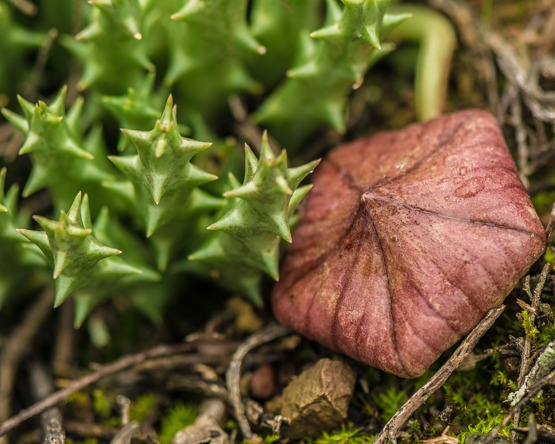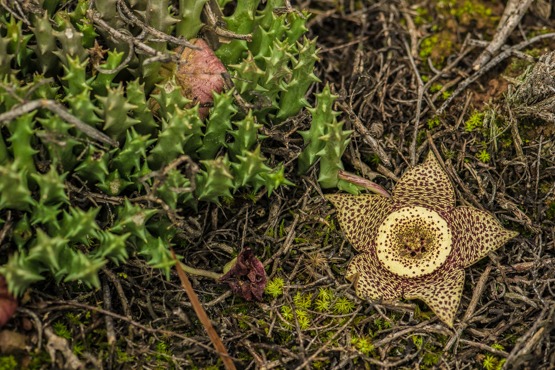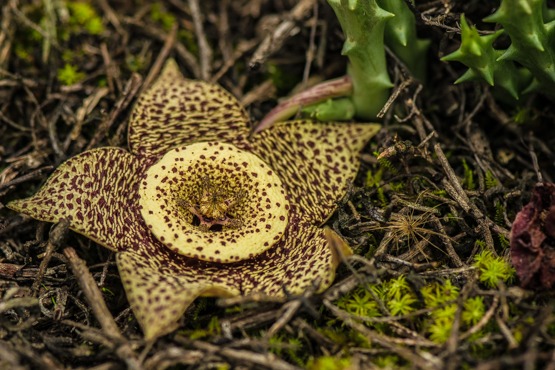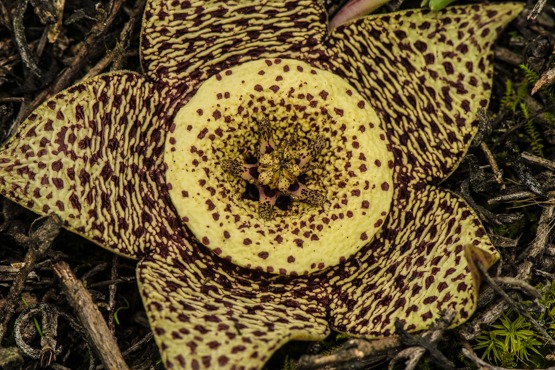Common names: Boekies, Bokhoring, Aasblom, Toad plant, Cape Fritillary, Carrion flower.
This was the first stapeliad to reach Europe from South Africa, which probably at least partly explains the enormous number of synonyms. It is also one of the most widely cultivated stapeliads and is found in many subtropical areas as a garden escapee.
In the wild it is widespread in the southwestern Cape, mainly along the coast from Lambert’s Bay to Humansdorp, but also in the southern Great Karoo as well as the Little Karoo. It generally occurs on stony slopes, often under shrubs.
The stems are mostly erect, to 15 x 1 cm (excluding the teeth), obtuse or conspicuously 4-angled,
green with purple-brown markings. They form clumps usually up to 20 cm across, but sometimes up to over 1 m.
The flowers appear in Dec.-Sept., usually one per stem. They smell of carrion, which attracts the flies by which they are pollinated. The corolla is 4.5-8 cm in diameter and very variable in colour: inside cream to greenish-yellow, with rather large, purple-brown dots; the annulus is usually paler yellow and more finely dotted.
Photos taken 13 March 2019 on Zolani-Bonnievale road.



